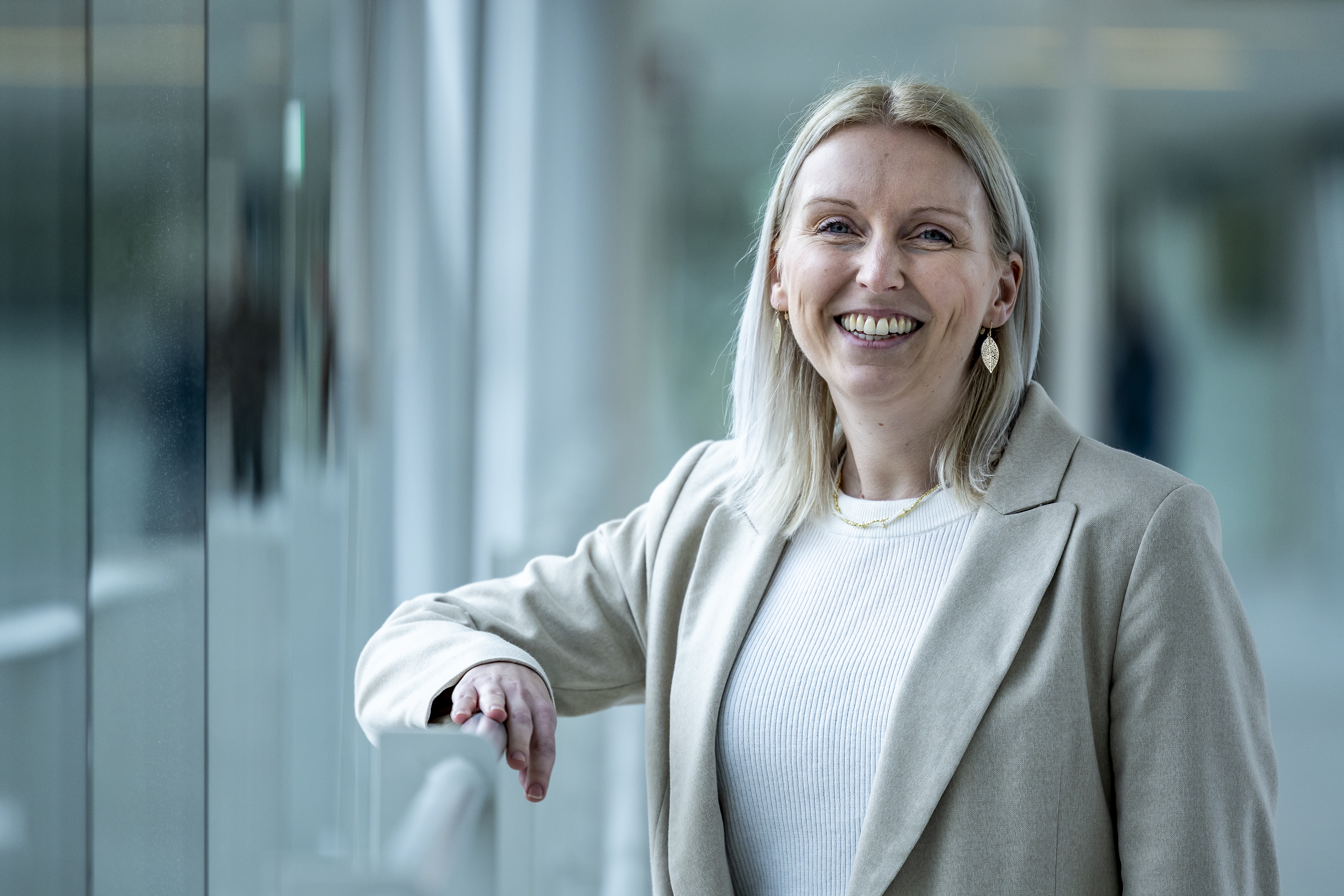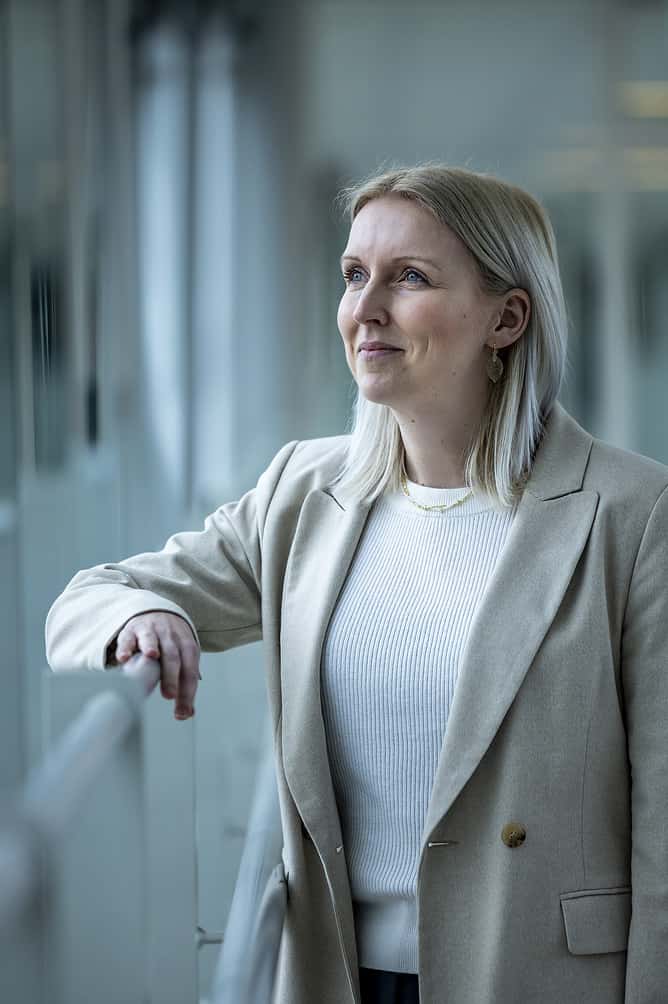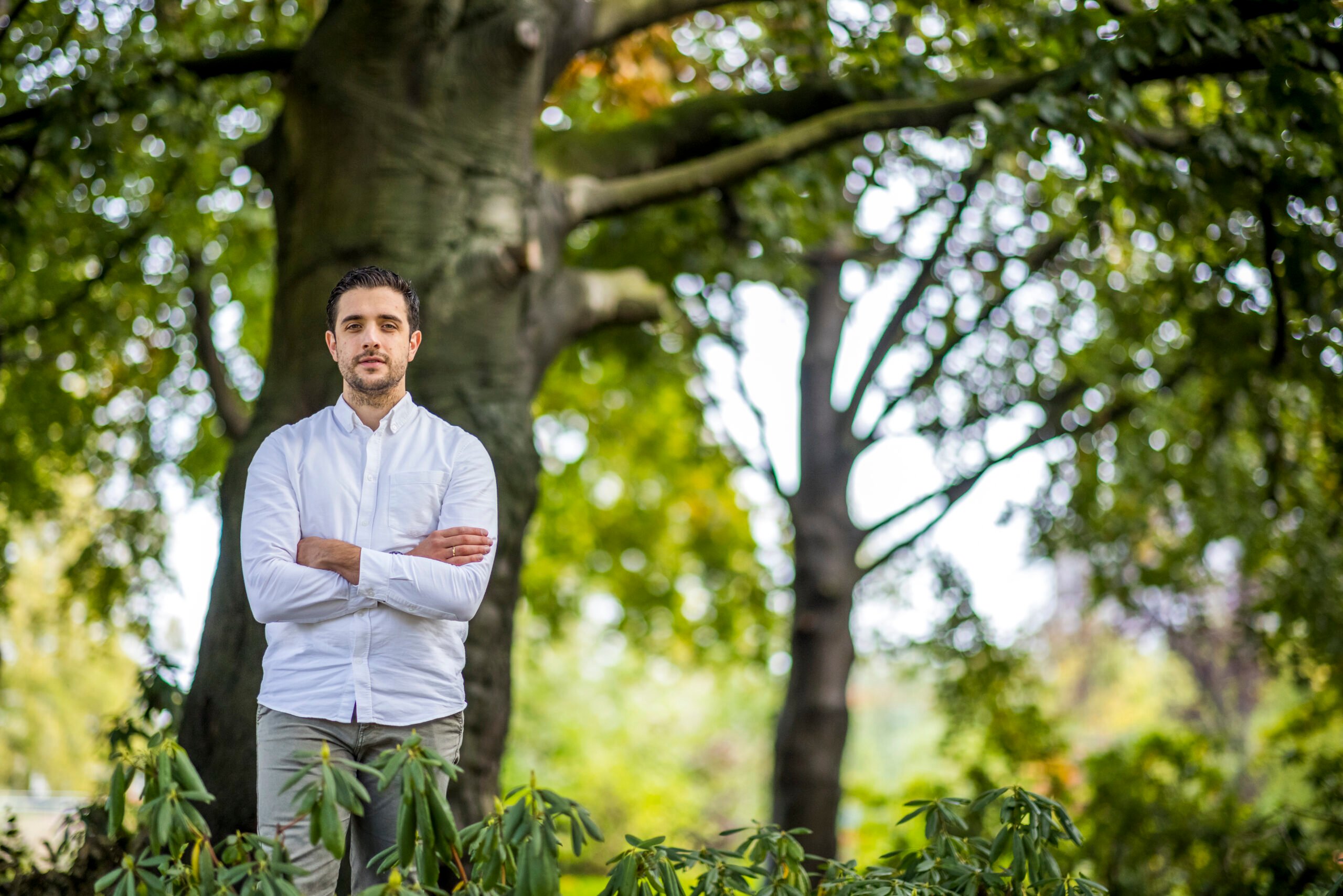
In 2023, “tear doctor” Marlies Gijs published an article on a global first: she detected compounds of Alzheimer’s disease and the incurable brain disorder Huntington’s disease in tears. This is also important news for patients since until now, these substances could only be detected by performing an invasive epidural. The breakthrough is particularly noteworthy because the Flemish biochemist works in the Ophthalmology Department at Maastricht UMC+.
Tear research, Gijs explains, is a way to obtain biological information about our eyes. “We perform a lot of scans here at the clinic; we look at different layers in patients’ eyes, and if they have undergone structural changes, this means there’s a problem. However, structural changes always start with enzymes or proteins that aren’t working as they should or have accumulated. The sooner you detect this the better because it can lead to damage. If you want to examine the tear fluid, you can only get this data from the eye using a needle. This isn’t a very pleasant procedure, so it isn’t much good to us.”
Why this is important:
Marlies Gijs is conducting promising research on tear fluid at Maastricht UMC+, which may lead to new diagnostic and treatment options for eye diseases and other medical conditions.
Noncompliant
Born in Dessel, Belgium, Marlies Gijs comes from a family of tree growers from the Kempen region. She studied pharmaceutics in Leuven and got her master’s degree in biotechnology and biochemistry in Antwerp. Marlies ended up in Maastricht through cancer research in Liège, where she started working on the development of a drug delivery device for eyes, a public-private funded project of Chemelot InSciTe. “We developed a small rod to contain medicines,” she explains from her sixth-floor office with a lovely view of the Maas River and the hill of D’n Observant. “We know that patients struggle with having to put drops in their eyes three times a day for 30 days post-op. They are not very compliant when it comes to therapy, so this naturally results in complications. This was why we developed a rod containing a 30-day supply of the drug. Measuring the tear fluid, we analyzed exactly how much of the drug was administered by the rod. This was how I got started on tear-fluid testing. Later on, I started looking into biomarkers, substances that indicate the presence of Alzheimer’s disease, for example.”
Preference for basal tears
We can compare tears to blood, Gijs says. “Tears contain lots of substances that can tell you something about a patient’s health, and not just their eyes, but also about their brain and entire body. The question, of course, is: does being able to detect certain diseases in tear fluid add value? In order to diagnose Alzheimer’s, you now have to perform an epidural. In this case, extracting tears is much more preferable.”
Gijs shows me a strip of paper that is laid in the lower eyelid where it absorbs tears. “It’s not painful and is at the most a little uncomfortable.” The drop is squeezed out again in the lab.

Is it easier if the patient cries? “When we cry, we produce more tears, which are actually more water than anything. The disease-specific substances aren’t produced immediately so we’re more interested in tears that just keep our eyes moist. We have a preference for basal tears over emotional ones.”
Humans produce about one to two microliters of tear fluid per minute. This fluid is produced and drained in a closed circuit and keeps our eyes healthy. Gijs: “Anything found in air particles ends up on your eye surface, including viruses. These must be broken down immediately and rinsed away. At the very beginning of the COVID-19 pandemic, there were rumors in China that the virus entered the body through the eyes. We started studying this right away. We did find the virus in the tear fluid, but the idea that this was how people contracted it turned out to be an urban legend.”
Opponents
After the publication of the article on detecting Alzheimer’s in tear fluid, Gijs’ research continued. “Now we’re trying to prove that we can diagnose Alzheimer’s as accurately as we could with an invasive epidural. Even if we can avoid just a few of the epidurals being performed, that’s a win.”
Incidentally, not everyone is cheering on this kind of research. Gijs has the full support of Maastricht UMC+ but there is a strong biopharmaceutical lobby advocating for blood analyses. “You quickly see opponents who don’t believe that tests on tears or saliva are reliable enough. And they have a huge industry behind them.”
For this reason, the University Clinic for Ophthalmology, in cooperation with Brightlands Maastricht Health Campus, has called in a patent agency to help with patenting the results in tear fluid. “They study whether or not the results are patentable and help write and submit the patent application. After that, Brightlands helps sell the patent, or decides to commercialize the invention ourselves so we can launch the test on the market.”
Question of conscience: if all this works out, will she join in? “I definitely want to stay involved as a researcher, but I won’t become the CEO or anything. I know for sure there will be tests based on tear research in the future. On the one hand, because they offer an alternative to invasive testing, and on the other, because self-tests have become much more common since COVID-19. People are open to it. I think healthy people these days want to know more about their blood and about vitamins. People with diabetes have to test themselves anyway. If they can do this without having to use a needle, that would be major progress.”

Do you really want to know?
The question is whether people want to know if they have Alzheimer’s. It takes a long time for the condition to reveal itself. Gijs: “Of course it’s always better to do one of these tests in the presence of a GP or an expert. Particularly when it comes to Alzheimer’s disease, for which a cure still hasn’t been found. Do you really want to know? And yet, when our discovery was announced in the media, I got a lot of emails from people whose parents had dementia and who want to know for themselves if they have it too. I just know people will use one of these tests when they are available on the market. Huntington’s disease is hereditary and usually starts in adulthood, but it’s still hard to predict when exactly. This really complicates people’s life plans. We are now studying whether or not we can predict when the disease will actually emerge using tear fluid.”
‘There is a lot of interest in my research because tears are considered sweet and tender. I think this would be quite different if I was researching urine or saliva, though’
Marlies Gijs
Digital self-tests
This is where Gijs’ mission as a biochemist lies. “We work with other physicians to figure out where doctors’ and patients’ needs lie. We can examine tear fluid to determine the vitamin and hormone levels in healthy people, but it gives me more satisfaction when we can really contribute to preventing or fighting diseases. Our hope is that we can acquire new information about the course of a disease by taking regular tear samples. We are also seeing a rise in digital self-testing at conferences, products with a detector that can read the outcome of a pregnancy test and immediately email this to the GP or gynecologist, or digital self-tests that tell you to go see your doctor. These applications exist but I don’t know if they’re being used yet or not. We will see a lot more of these in the future at any rate. Digital medicine will also ensure that we will be having many more video calls with doctors as a way to save time and energy. This is where self tests can really help.”
Crowdfunding
It will be a long time before the first tear test can be launched on the market, Gijs believes. “There are a lot of laws and regulations to deal with. I also noticed this when we developed the drug rod for eyes. Plus, it costs a lot of money.” Is it hard to get the funding? “Due in part to cuts in education and research, it’s getting harder and harder to get government funding, so we also want to contribute to these efforts. In cooperation with the University Fund Limburg (SWOL), we have just set up a crowdfunding campaign. This will enable foundations, companies and private individuals to contribute directly to my research on the innovative diagnostic tool for Alzheimer’s using tear fluid.”
Tender theme
“There’s a lot of interest,” says Gijs. “It becomes particularly noticeable when the media interviews me about it. The discovery appeals to them, and I think this is because tears are considered sweet and tender. I think this would be quite different if I was researching urine or saliva, though. Everyone is fascinated by tears. I prick up my ears too when I hear the word tears in a song. I first noticed it when my children were born. Initially, babies cry without tears. Their first tear doesn’t roll down their cheeks until they are seven months old. This is very unusual, and no one knows why it is. It’s really special.”

